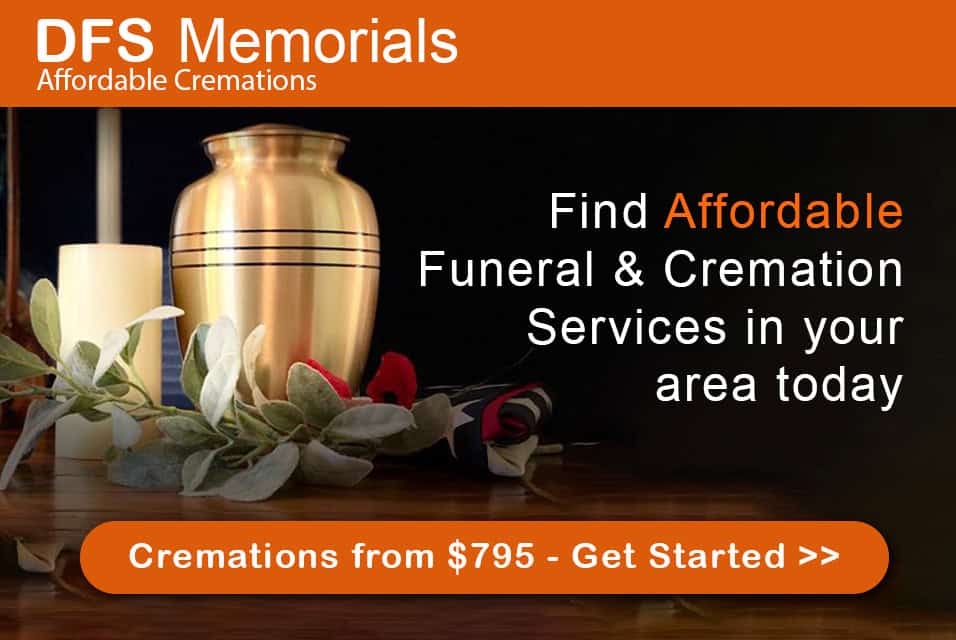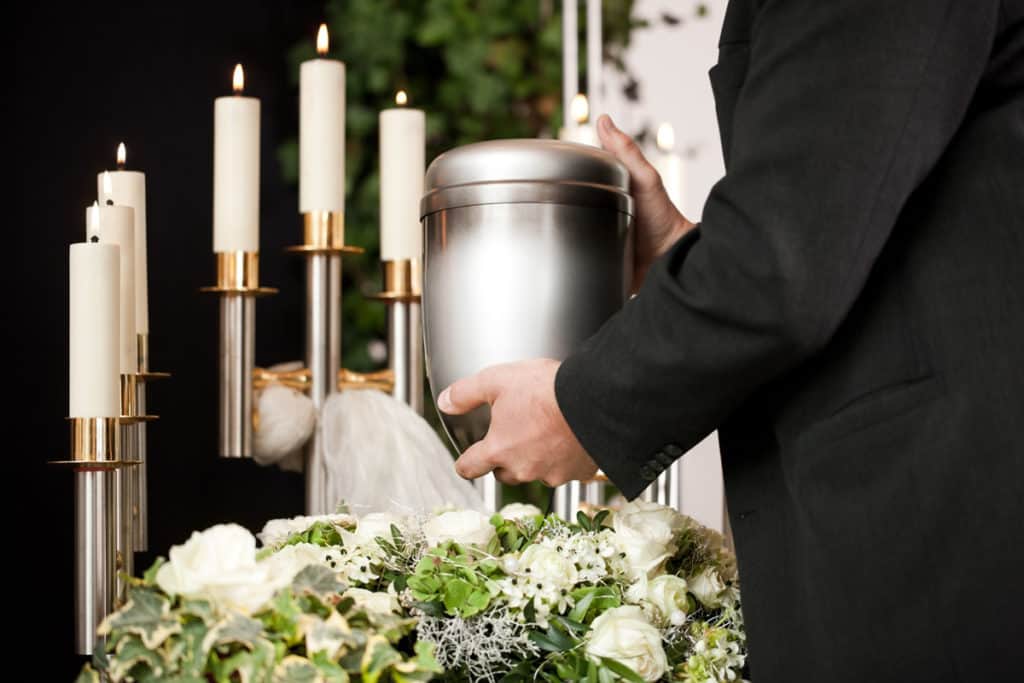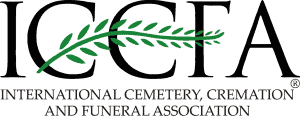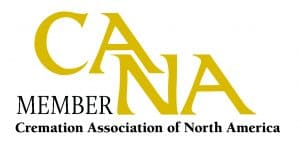
Cremation has become a household term in the U.S. today, now accounting for 55% of all funerals conducted. Even those states traditionally very slow to accept cremation–Mississippi, Tennessee, and Alabama are now reporting significant increases in cremation cases. The funeral industry, known in the past for its slowness to respond to change, is starting to respond to consumer demand for new and different death care alternatives. The NFDA published a report highlighting that by 2030 cremation will account for almost 80% of dispositions. This will require the funeral industry as a whole to re-align its strategies for future stability.
How is the funeral industry changing?
There are several notable and significant changes occurring in the funeral industry in the U.S. right now. There is a huge shift towards cremation. This is requiring many funeral homes to address their business model, premises and staff training. Legislation governing how funeral businesses operate does vary by state. In those states that permit it, more funeral homes are seeking to invest in cremation equipment, and cremation retorts, to be able to offer cremations ‘in-house’ as opposed to sub-contracting with a local crematory. As the volume of cases increases, so the profitability of owning and operating a cremation machine becomes of key interest to funeral business owners.
As more funeral homes install cremation equipment, so there is a need for specialist training in how to professionally and safely operate crematory equipment and also handle the disposition of human remains by cremation in a dignified and secure manner. Two of the key questions many families ask are “how do I know I am getting the remains of my loved one back” and “is my loved one cremated on their own”?
Because cremation is such a final disposition of a deceased body, there is a need for stringent checks and measures. The National Funeral Directors Association and the Cremation Association of North America (CANA) are both now actively offering crematory certification courses to their members to encourage the safe and regulated practice of cremation in the U.S. So largely at present funeral homes CAN adapt to the cremation trend but in the short-term, there is an investment cost–both in equipment, premises, and training. The question for many funeral service providers is HOW they will elicit a return on investment when the average case revenue is perhaps 40% less than a traditional funeral (or maybe more).

How does a cremation funeral differ from a traditional burial?
A traditional burial is an elaborate affair that can be a simple funeral service prior to burial or can involve viewings, visitations, and wakes. It can last anything from a few hours to a few days. A casket is required, as is a burial vault, a cemetery plot and a grave marker. Transportation will transfer the deceased from the funeral home to the cemetery and or chapel, and embalming, cosmetology, and hairdressing are all incremental services. A traditional burial costs anywhere between $6,000-$26,000 when all the services and merchandise are totaled up.
A cremation funeral differs in that there is no immediate requirement for a burial plot, no need for a casket or a burial vault, and in most cases no requirement for embalming. The funeral ceremony is conducted just as it is prior to a burial, but the body is transferred to the crematory after the service. Some funeral homes offer rental caskets, so even if the body is in repose during a service, there is no need to purchase a casket for a couple of hours use.
Why is cremation becoming so popular?
The NFDA report cites “the rise in consumer preference for cremation is due to a number of factors, including cost, decreased household discretionary income, environmental concerns, fewer religious prohibitions of the practice, a growing preference for simpler, and less ritualized funeral ceremonies”
Rightly the NFDA report mentions cost first and decreased household income second. These I believe are the two most significant reasons why cremation is becoming so popular. According to CANA, a full cremation service will generally cost around $3,200, so this is at least a third of the cost of a traditional burial. That is a HUGE saving for a family and when according to a CNN Money report, 76% of Americans are living pay-check to pay-check, it is not surprising that cremation is becoming resoundingly the death care option of choice!
Whilst the funeral industry IS attempting to now address and acknowledge this shift to cremation and not treat it as a passing fad, they still behave largely ostrich-like when it comes to discussing direct cremation. The main mantra I hear from those within the industry at present is that we need to “educate people” about how memorialization and grieving is such an intrinsic part of what they do. Much focus is given to how funeral homes should become uber-centered on community engagement, social media and customer experience. In fact, a session at an NFDA Convention focused on enhancing customer service with an emphasis on establishing “an emotional attachment with your customer”. Whilst some in the profession think that building on this ‘emotional attachment’ is key to encouraging families to buy into incremental services, there are others who understand that a number of families today are choosing to have NO emotional attachment whatsoever. In fact, there are more online funeral businesses emerging, and more funeral homes offering families the option to conduct all cremation arrangements online without ever visiting the funeral location.
Direct cremation–the most economical disposition choice
The demand for the most economical cremation is what scares many in the industry the most. Although we are shifting to cremation, it is the percentage of these cremations that are direct cremations that is perhaps the most alarming. A direct cremation requires the most minimal services of a funeral director and is offered to the funeral consumer at a fraction of the cost of a full-service cremation.
No pre-funeral services (viewing, visitation, ceremony) are conducted, a basic cremation container is used, and the cremated remains are returned in a temporary container. This is available to a funeral consumer at a lower cost. Although some funeral homes still charge $2,000-$3,000 for a direct cremation [The cost of a direct cremation varies by area and funeral location but is always listed on a funeral home’s GPL], low-cost cremation providers offer the exact same service for between $600 to $1,200. Indeed the average cost of a direct cremation through the DFS Memorials network is $895 and the providers in the network (who all specialize in offering a low-cost direct cremation option) report that on average 80% of the cremations they perform are direct cremations.
What are the implications of such a shift to cremation for the funeral industry?
The shift to cremation is already hurting funeral homes profit margins. Revenue per funeral case is down. According to the NFDA report by 2020 39 states will be cremating more bodies than they bury. By 2030 we can expect a cremation rate topping 70% (maybe even sooner than this projection). The implication for funeral businesses is that with revenue per case declining, then the only solution is to increase case volume.
A number of funeral homes are already doing this by increasing their service area. The Internet certainly lends itself to enabling a funeral service provider to market himself to a wider audience. In most cities now there is a battle waging for the direct cremation market, as funeral homes battle it out over volume of cases. The funeral industry is fragmenting. Direct cremation signals an era when the industry transgresses into becoming a body disposal business. There has also been an upsurge in funeral celebrants offering families their services to memorialize a loved one, and a whole array of businesses set up to create cremation artifacts. The raw reality is that many families are opting to use the services of a funeral service provider merely to conduct the cremation element, and then conducting their own memorialization once they have the cremated remains. In fact, family ash scattering ceremonies are becoming surprisingly popular! When cost and decreased household income are driving the shift to cremation – then these same consumers will opt to save as much as possible on the overall funeral experience.
The NFDA report attempts to massage its members’ concerns about cremation by reporting that “more than 58 percent of consumers associate cremation with a memorial service whereas just over 15 percent of consumers associate a traditional funeral ceremony prior to cremation.” Unfortunately what this statistic does not reflect is that this association of cremation with a memorial does not necessarily indicate whether these consumers would opt to use the funeral home for a memorial, employ the services of a funeral celebrant or conduct their own memorial service. The fact that only 15% associate a service prior to the cremation IS a reflection of how fundamentally our views about using a funeral home are changing!

How is the industry responding to this shift to cremation?
As I mentioned above in the section on how the funeral industry is changing, one of the primary ways that the industry is responding is by investing in cremation practice. More funeral homes are installing cremation equipment, in some cases even taking on new premises to house their cremation center. There is an incremental cost to HR and staffing budgets as further training is required, along with attendance at relevant conventions being hosted to help funeral directors understand, and respond to, this shift to cremation.
Funeral homes are closing down. There are in fact too many funeral homes in the United States, and funeral businesses have been closing down over the last 10 years. In 2003 there were 21,700, in 2013 only 19, 486 were still in operation. The shift to cremation for those funeral homes with large overhead that have been sustained by $10,000 traditional funeral cases is catastrophic. There is just no way that an average case value of $3,000 will allow them to continue profitably.
Another response to this shift is acquisition and consolidation. Some of the bigger funeral companies (and even some smaller ones) are embarking on a program of acquiring additional funeral locations and premises. In some cases this sits side-by-side of the fact that some funeral homes are closing, be it they cannot maintain in business anymore, or that a funeral director is ready to retire and sell up.
Service Corporation International SCI (the largest single death care corporation) has acquired its two largest competitors in the last few years. As part of this process, it has consolidated a number of funeral locations. SCI also acquired a controlling share of the Neptune Society in 2011 – a nationwide cremation company solely dedicated to direct cremation.
An associate of mine within the funeral industry, operating out of Miami, stated to me at the beginning of this year that it will be the ‘newcomers’ to the industry that will be the real winners, those that are not ‘old-school’ and can approach the funeral industry with a business head, instead of treating it like a family inheritance or vocation. This juxtaposition between the old and the modern is very apparent when you evaluate many funeral service provider websites today. The old-school regale their visitor with tales of their heritage and what they used to do, do not often devote much content to cremation and certainly never mention prices! The more modern funeral director is succinct in stating what they do now, what services they offer to families, with exceptional content on cremation and clear and transparent pricing information.
The funeral director that truly IS responding to this huge shift to cremation is already ahead of the game. He will have been positioning himself for a few years now as the ‘authority’ on cremation in his area. He will understand that providing families with understandable and affordable cremation packages and pricing is imperative. An example of this can be seen by looking at Georgia Funeral Care & Cremation Services. Established in 2012, Kevin Marcy designed Georgia Funeral Care from the ground up to be a modern funeral business targeting the demand for simple and affordable funeral alternatives. The homepage of his website does not mince words but outlines exactly what most funeral consumers want to know…what do I get and how much does it cost?Kevin Marcy is not alone in his campaign to re-imagine the funeral industry, there are others like him across the U.S., and I touched on this subject in my article on ‘How many funeral homes are creating a new cremation arm to optimize the market place’ last year.

What will the next 100 years of funeral service look like?
What can we expect to see in the years ahead? Certainly a death care industry different from the last 100 years! Cremation will fundamentally change the landscape of the death care industry in the U.S. Not only will funeral homes have to adapt to meet these changes, but cemeteries also need to adapt too. Some have already changed their grounds to accommodate memorial scattering gardens and more extensive cremation niche sections. Funeral businesses will need to become more technology savvy to reach a wider audience online, to cater to families who wish to make arrangements online, to better maximize efficiency and turn around the highest volume of cremation cases they can manage in a day. The days of the hearse going out to collect one body are over, the modern funeral vehicle will be a refrigerated van that can complete a round to collect 10 bodies or more at once.
Maybe we will see Super-Crematory Centers handling a high volume of direct cremations and serving regional areas. However, we should keep an eye on what has occurred in Europe where cremation rates are high, and similarly, gas prices have increased as have other costs associated with cremation. Legislation on emissions, permit charges, coroner death certification – if all these change or increase it will drive the cost of cremation up. Perhaps natural green burials will come back in vogue if this can be offered to families at an equitable cost to a direct cremation? However, as a postmodern nation fascinated with convenience, instant gratification and personalization, cremation satisfies our need for a quick and convenient disposition, with the option for unique personalization variables for what we can do with the cremated remains. This cremation trend has some distance to go yet to run its course!
Sources:

